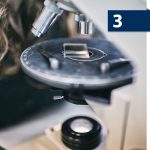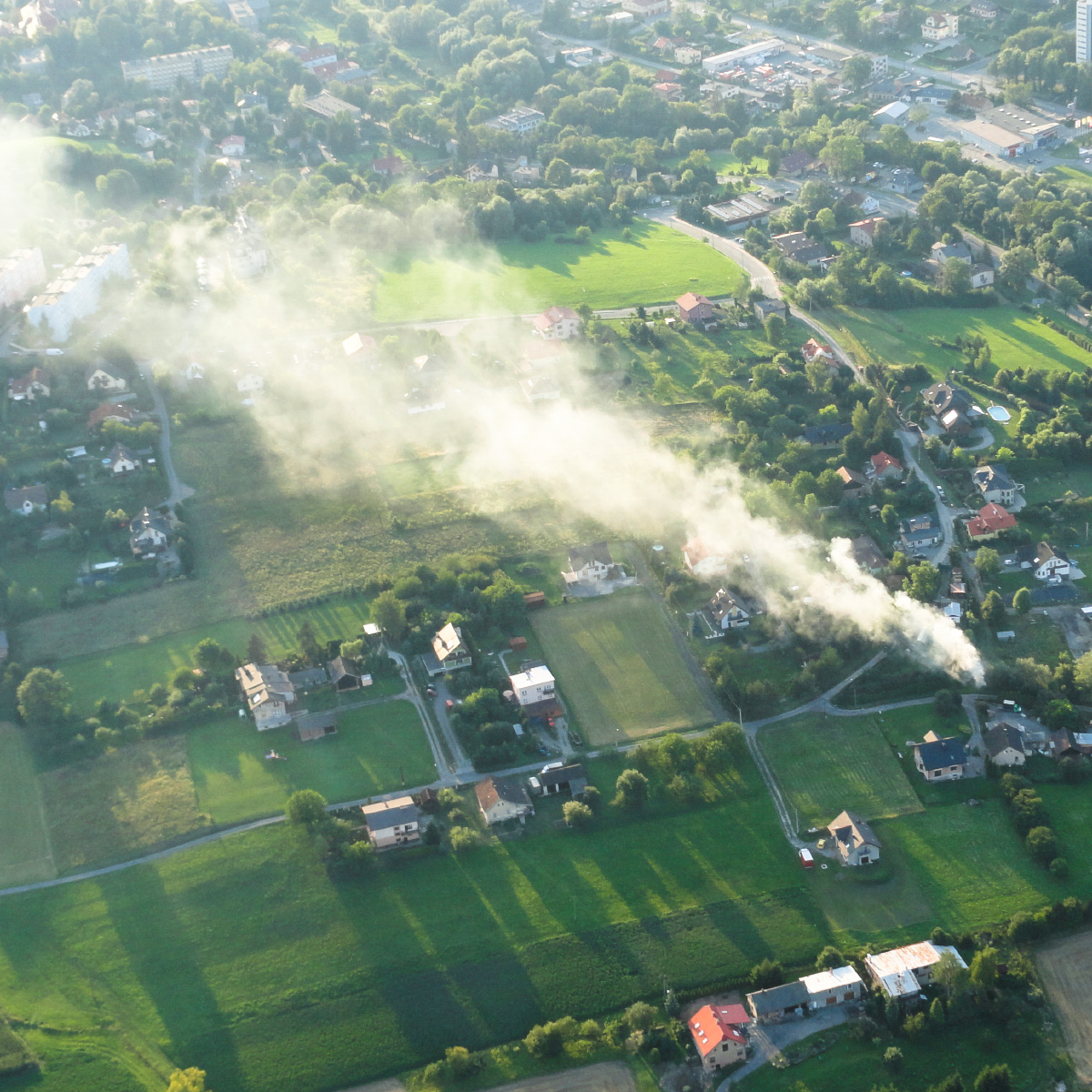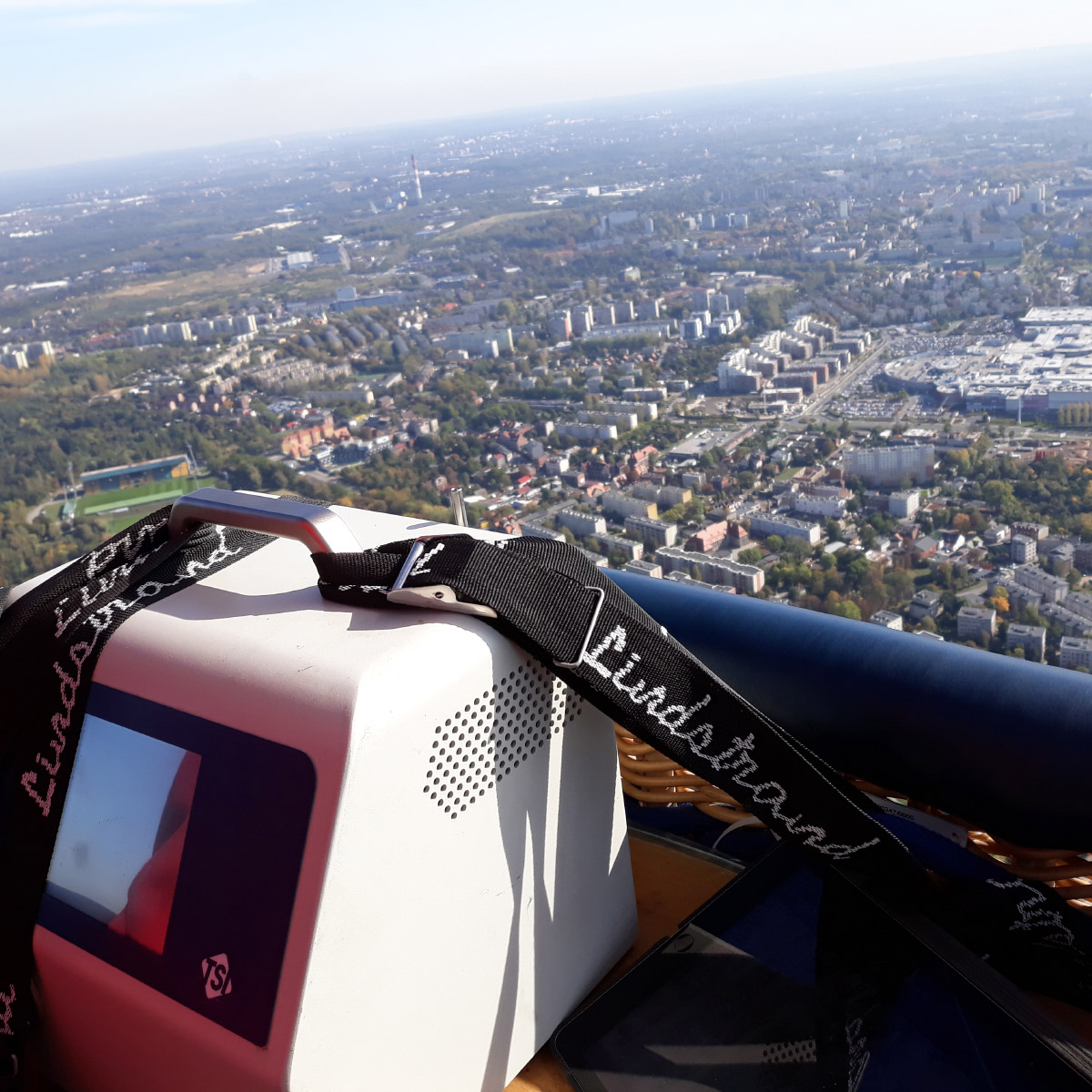Raman Spectroscopy Laboratory at the Faculty of Natural Sciences, the University of Silesia
Laboratories
Scientists and students of the University of Silesia use three types of interconnected laboratories for research on atmospheric pollution:
flying laboratory
hot-air balloon with measuring equipment placed in the basket

mobile laboratory
off-road vehicle equipped with measuring equipment, which cooperate in real time with the equipment located on the balloon board

stationary laboratories
research resources of various units of the University of Silesia, in which analyses of collected samples are performed

Balloon for studying the air quality
Since 2016, scientists and students have had the first Polish Overhead Mobile Laboratory placed in the basket of a manned hot-air balloon at their disposal. The balloon may lift the University Laboratories for Atmosphere Control (ULAC) to a height of 4 km. It flies above the cities of Metropolis GZM, collecting complex data on the quality of air inhaled by the inhabitants, and pollution movement directions.
The project involves scientists in many disciplines: meteorologists, climatologists, mineralogists, biologists, physicists, chemists, hydrologists.
Advantage over drones
Drones have already been “employed” for testing air quality, but their capacity in comparison with the balloon is very low. The balloon may carry up to 1,200 kg. Obviously, the basket, crew (4 members and the pilot) and gas cylinders are the necessary weight, and the rest is specialist equipment.
The fully equipped laboratory sets off in the balloon, whose capacity is 3,400 m3.
Research capacity
One of the most important devices located on the board of the research balloon is the nanoparticle analyser (10-300 nanometres) equipped with an additional device that enables to collect nanoparticle samples for transmission electrone microscopy.
The studies of their composition and size are carried out later in stationary laboratories. Another appliance is dust analyser, which can determine the concentration of microparticles within the range of 0.3-10 micrometres, and allows to specify the percentage of respirable dust penetrating into the respiratory system.
The balloon also carries aspirators to draw in the appropriate particulate filters which later get to the scanning electron microscope, where their type and size are determined.
Biologists bring their own equipment – devices use for collecting flora pollen and fungal spores, and device for collecting microbiological samples. The containers contain liquids that allow for collecting bacteria safely, so as not to kill them during collection, because after transport they are delivered to the laboratory where they are cultivated and examined under microscope. The team of organic geochemists identified harmful compounds and also indicates their sources.
Chemists put a high-flow aspirator (2.5 m3 per minute) in the balloon. Thanks to the filters installed there, scientists determine the chemical composition of the collected particulate. Another analyser enables research on the concentration of gases: nitrogen oxide and dioxide, sulphur dioxide, ammoniac, ozone and benzene. The equipment will soon be supplemented with analyser for examining the concentration of volatile organic compounds and carbon dioxide – this will be the last missing link to form a complete set for measuring gases.
The balloon must also contain a meteorological station, which records information about temperature, humidity and pressure. The devices recording wind direction and speed are part of standard aircraft equipment. To avoid contamination from the burner, all devices are located under the balloon basket.









